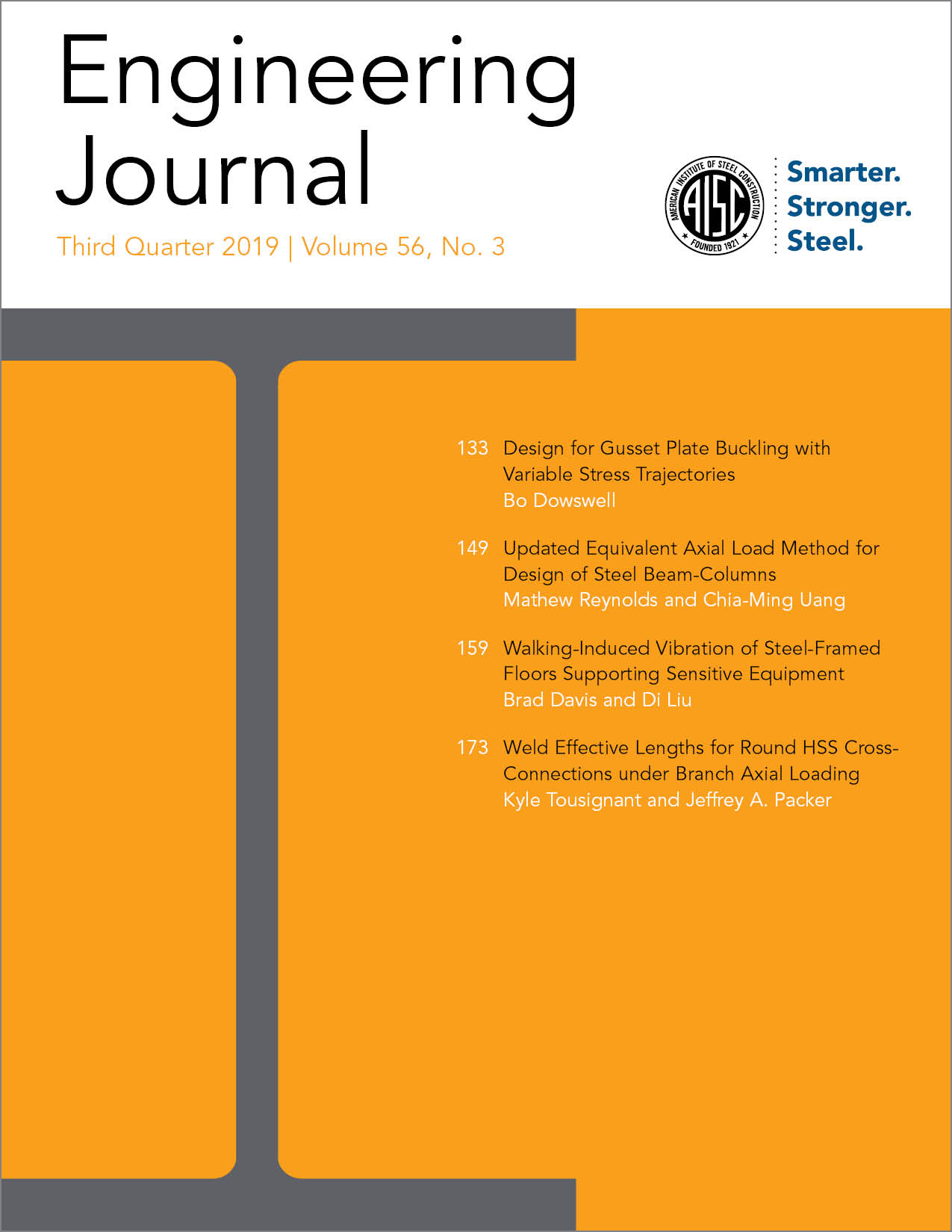Design for Gusset Plate Buckling with Variable Stress Trajectories
DOI:
https://doi.org/10.62913/engj.v56i3.1153Keywords:
Gusset plate buckling, stress trajectory, AISC column curveAbstract
Gusset plates are used in steel buildings and bridges to connect diagonal members to other framing members in the structural system. Gusset plates subjected to compression loads are currently modeled as rectangular columns with an effective cross section defined by a 30° stress trajectory known as the Whitmore Section. The buckling strength is calculated using the AISC column curve with empirical effective length factors. Previous research has shown local yielding allows the stresses to redistribute, increasing the effective width. Because the inelastic capacity decreases with gusset slenderness, a variable stress trajectory has been established which is dependent on the flexural buckling slenderness parameter. This paper describes a design method for the buckling strength of gusset plates using variable stress trajectory angles. The proposed effective length factors for the equivalent column were evaluated using data from existing research. The design model is valid for single- and double-plane corner gusset plates, including extended corner gusset plates commonly used for seismic design. Compared to the results of 162 specimens from 12 previously-published research projects, the proposed design model is shown to be more accurate than the methods that are currently available.

